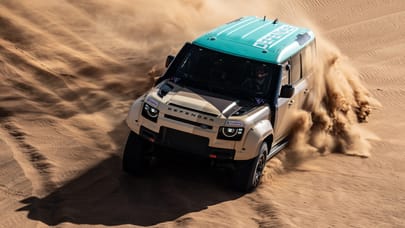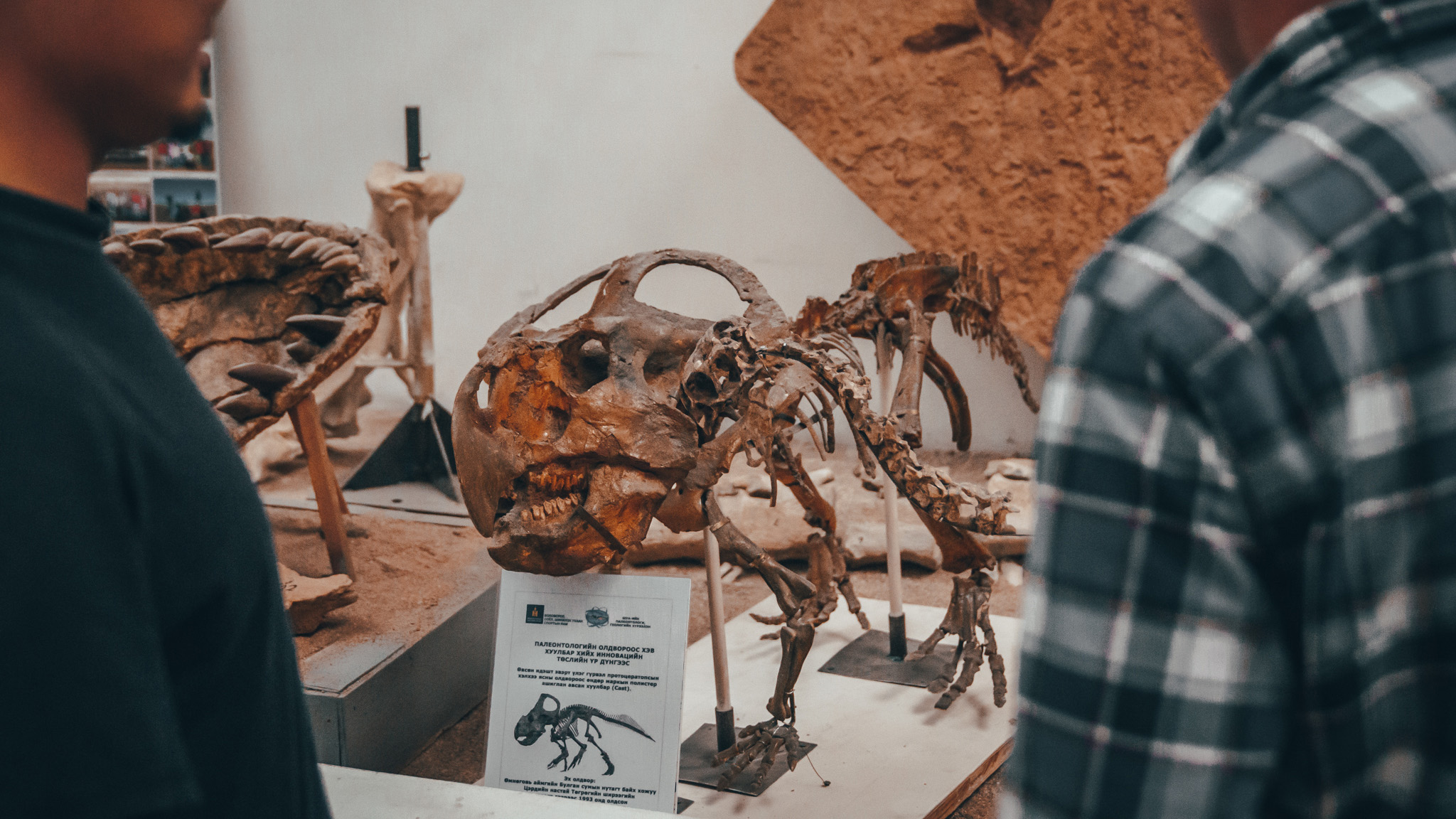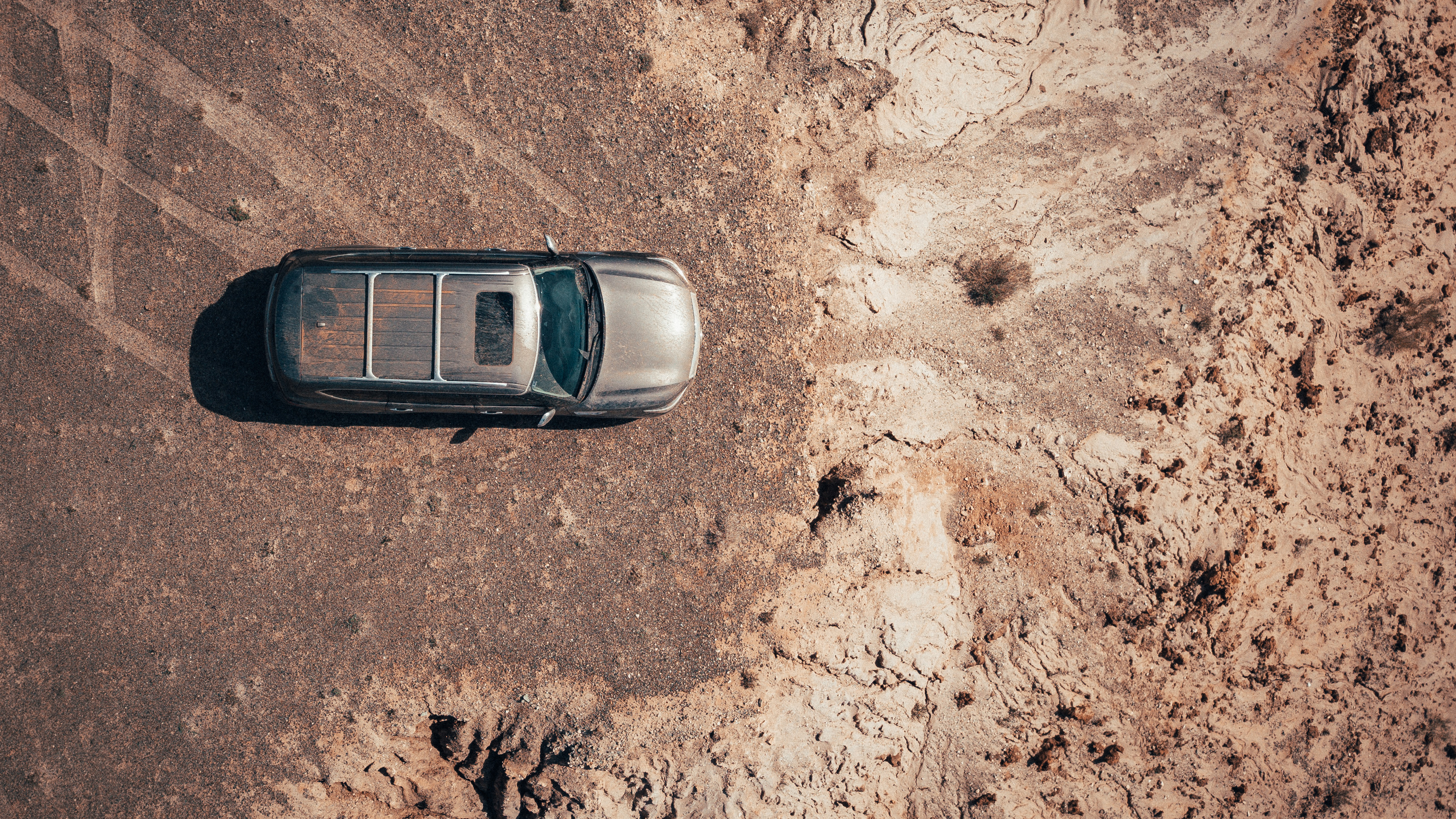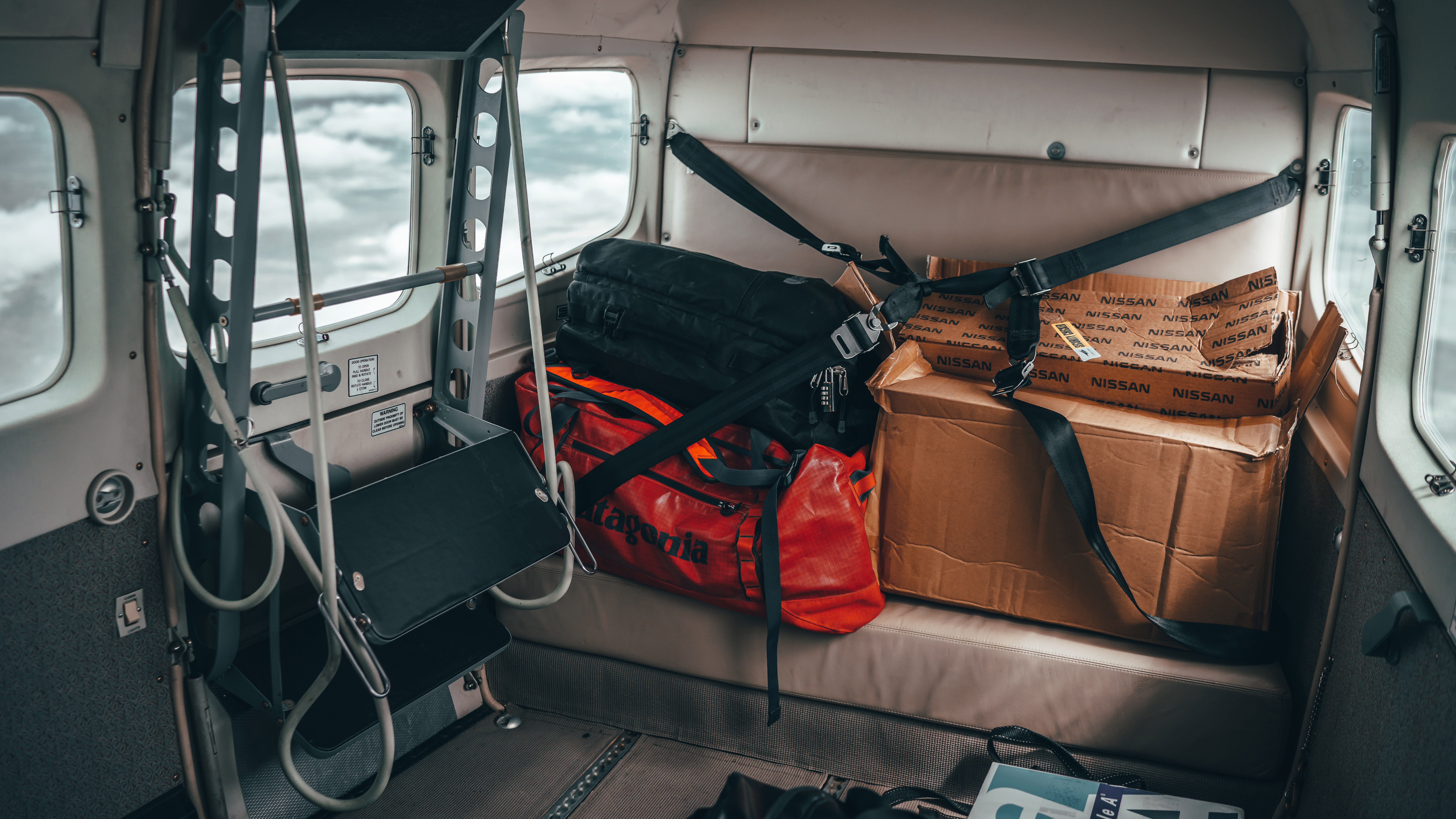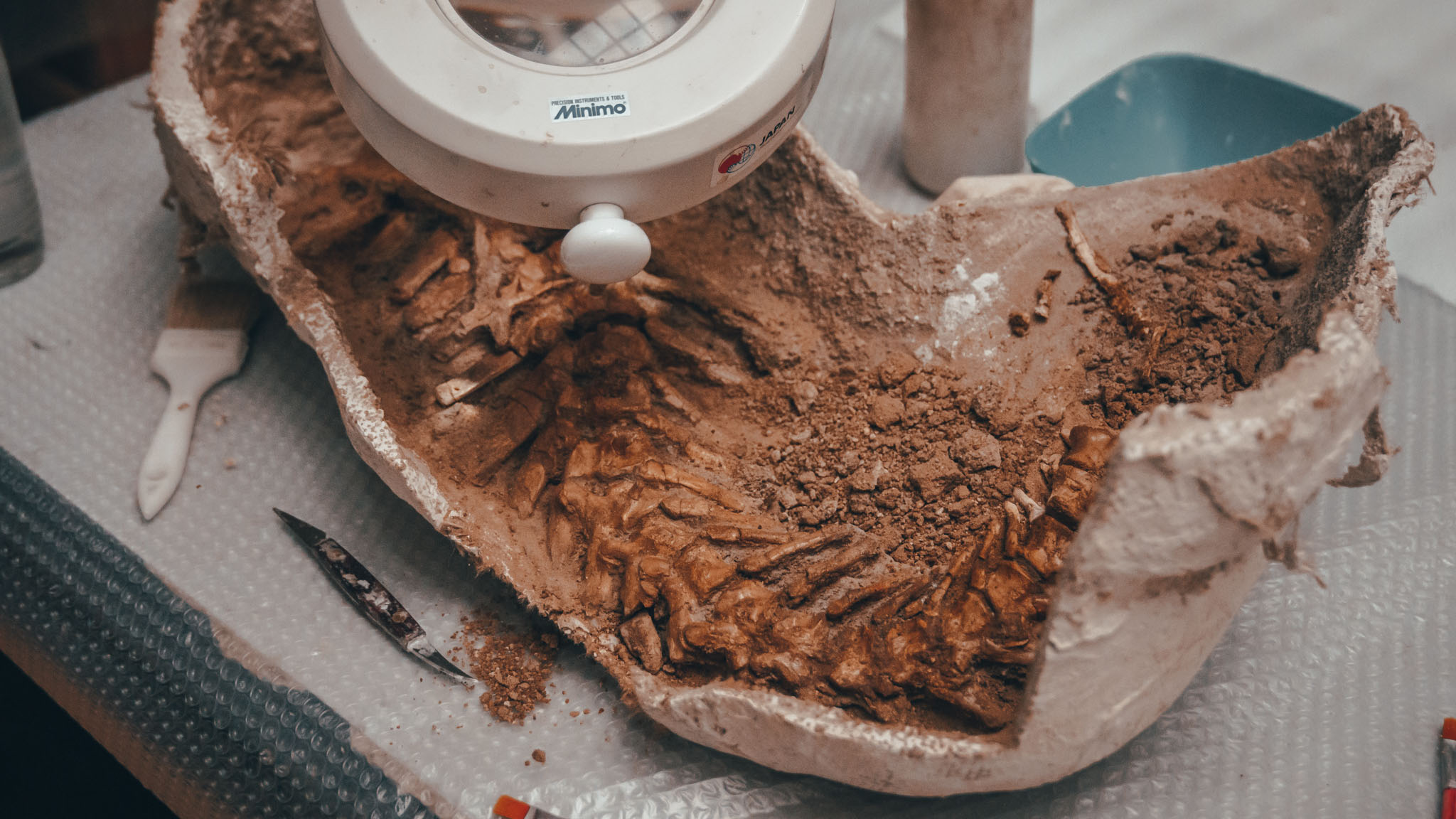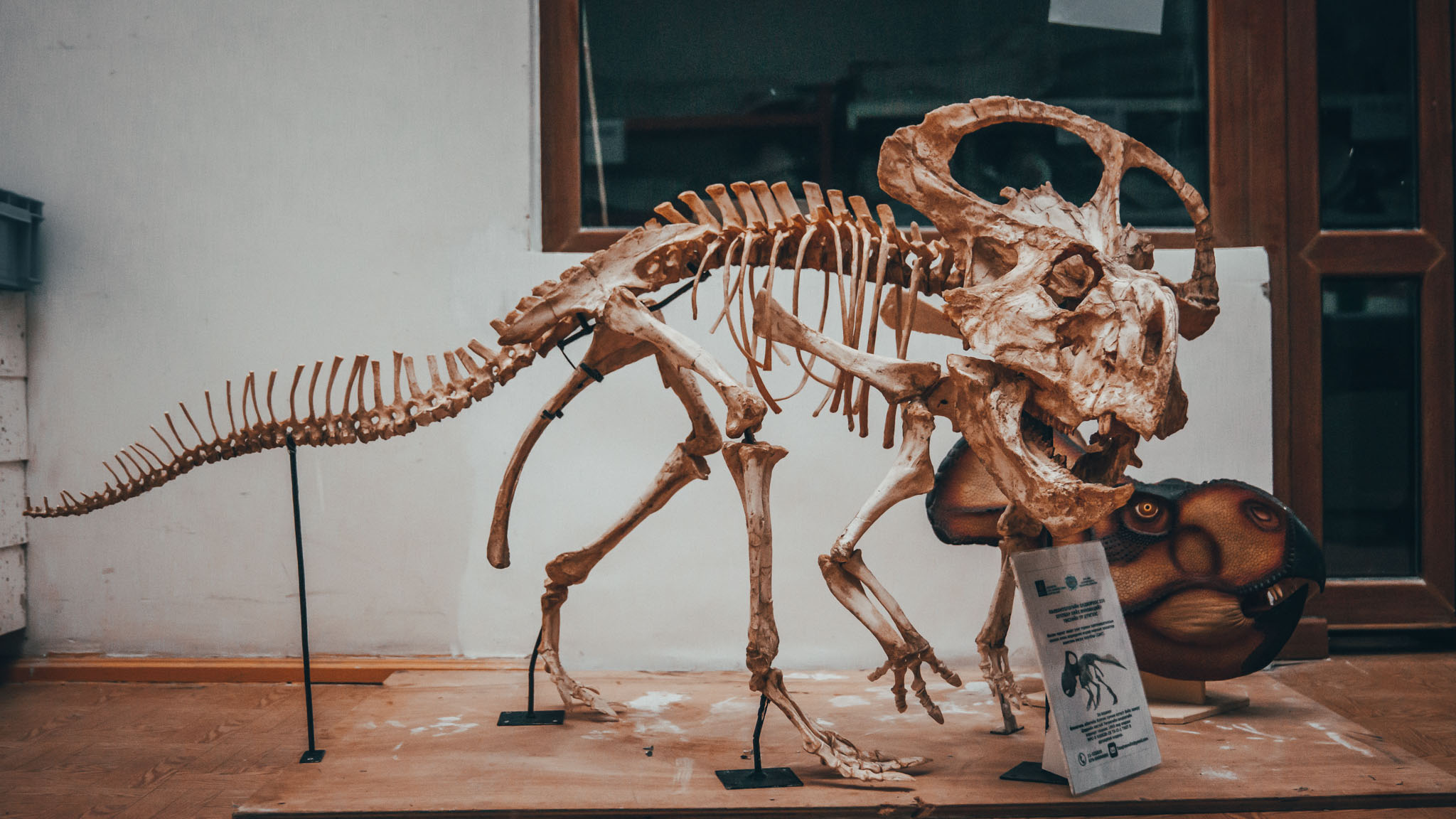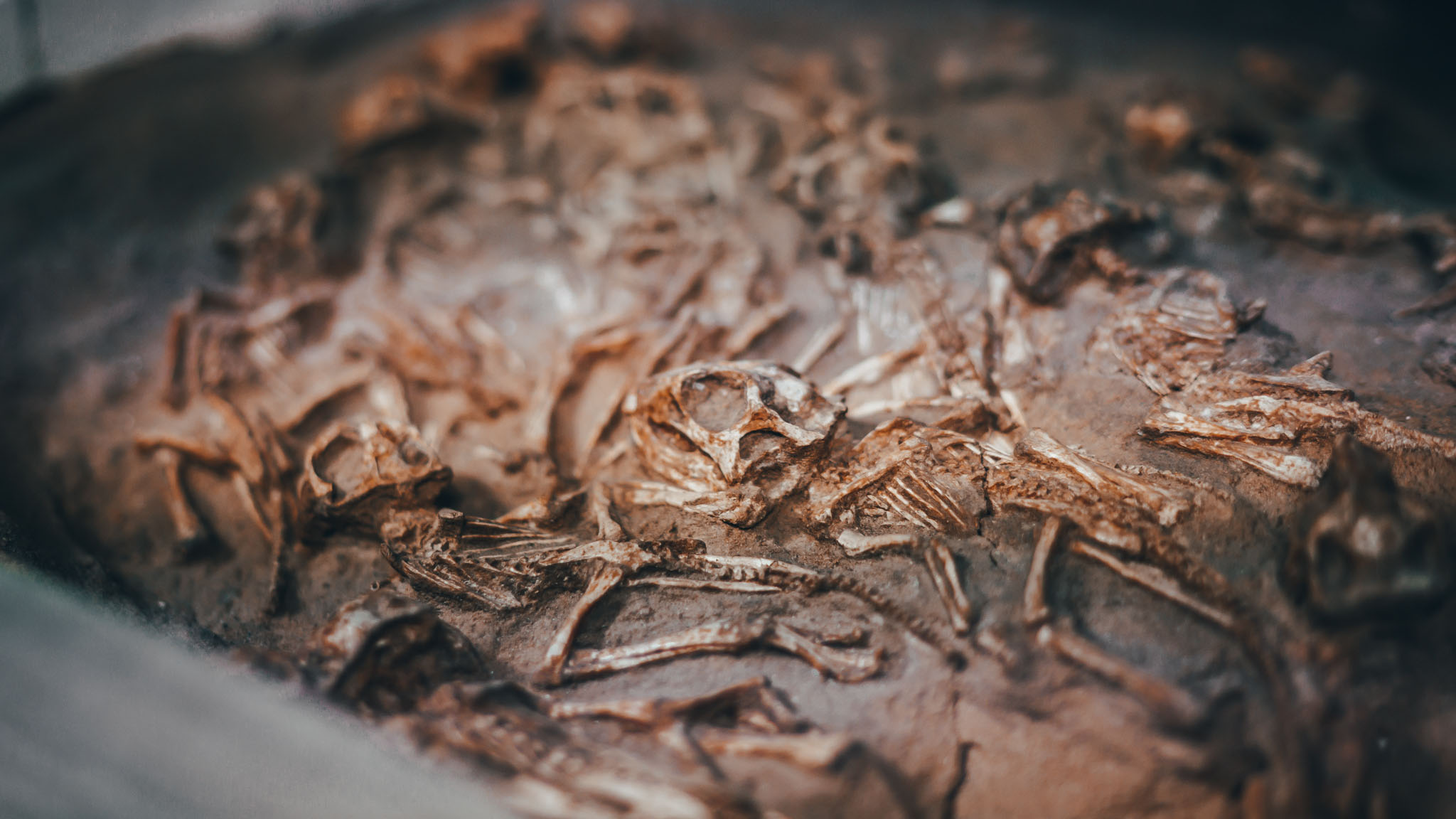
Searching for dinosaur fossils in an Infiniti
Mongolia is huge and empty of everything, apart from fossils. With the aid of ‘technology’, we lend a hand
It’s 9am in the Gobi desert and the sun is getting its boots on, ready for another hard day of grinding its heel into the punished earth of southern Mongolia. We’ve been out here an hour already and, until now, found nothing.
Well, that’s not true. Personally I’ve found quite a lot. Quite a lot of nothing as it turns out. For the record, dinosaur fossils are not root casts, striated stones or, on one occasion, ready-scavenged cattle bones. And then suddenly, there they are, scattered all over the surface. Clay-red, knuckle-sized Ankylosaurus bones. “A whole herd of them,” I’m told in an almost reverential whisper, about this club-tailed dinosaur that lived 80 million years ago and is now on its comeback tour.
Next lesson: geography and geology. Mongolia is vast, and vastly rich in fossil deposits. Sandwiched between Russia and China, it’s properly remote and the Gobi is the remotest part of it. The emptiest part of an already empty country (apply Mongolia’s population density to the UK and we’d be home to just 467,000 people). Hard to get to and tough when you do, it’s hardly surprising that it’s thought to contain the richest undiscovered fossil deposits in the world.
Words: Oliver Marriage // Photography: Richard Pardon
Because here’s another factor: small population (three million) equals few palaeontologists. Guess how many PhD-grade palaeontologists, with the necessary qualifications to lead digs, there are in Mongolia? I’ll tell you. Three. Of whom one is retired, one is the largely desk-bound head of department and one is… Badmaa.
Badamkhatan Zorigt – he of “this is crazy” – earned his PhD in America and now has quite the landscape at his disposal. So I know what you’re thinking: clumsily crow-bar a car brand into dino-hunting by giving Badmaa some Infinitis so he can get about the place. Not so much.
Infiniti President Roland Krueger happens to be a genuine adventurer who has dragged a sledge solo to the South Pole. As you do. That earned him induction into the Explorers Club, where he found out about this expedition in Mongolia, the plan being to use technology to revolutionise the search for fossils.
Because how do you find fossils? You dig. But where do you dig when your maps are Soviet-era 1:100,000 scale and the most detailed satellite imagery resolves itself at ground level as a solitary pixel 15m across?
Drew Wendeborn works for Quantum Spatial, a remote sensing company that uses drones and specialist cameras to plot powerlines, explore caves, peer through vegetation and so on. He’s here because he once randomly bumped into a Brit driving a black cab around the world. Don’t ask. The links are barmy, but where they’ve led to is Drew, photographer Richard Pardon and I in a Cessna south from Ulaanbaatar, kitted out with supplies for a couple of days in the desert and a space-hopper landing we mostly watch out the side window. Welcome to Dalanzadgad. Where the next adventure sport is a drive across the desert.
It’s raining, has been for two weeks, and the runway is the last bit of tarmac we’ll see. What follows is more akin to mud wrestling than driving (Richard’s nervous humming of the Jurassic Park theme tune when my driving becomes overly exuberant will be a continuing theme), as we head west into the Gobi, in search of a cheery palaeontologist.
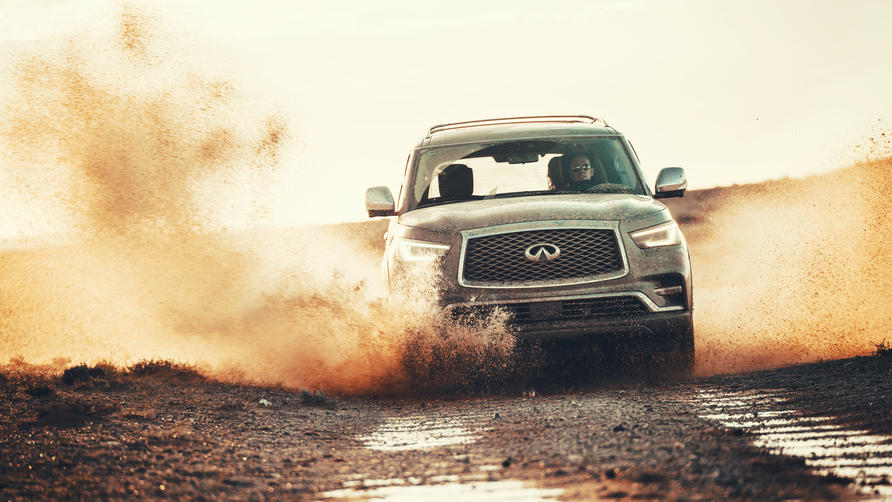
Our “Dr Zorigt, I presume?” moment comes after several hours of slithering in a convoy led by an inevitable Land Cruiser, pursued by three Nissan Navara pickups carrying our mobile camp and us in a pair of Infiniti QX80s containing drones and camera kit. Thirty per cent of Mongols are still involved in nomadic herding of the ‘five snouts’: camel, horse, sheep, goat and cattle. We see more herdsmen on motorbikes than horseback, but either way it’s not a lifestyle given to permanence – or a street address. Everything out here is done on GPS coordinates. The QX80’s satnav is deeply confused, insisting we’re somewhere off California’s Pacific coast, but our calm Mongol guides just keep pointing west as we rattle along parallel ruts through scenery that’s surprisingly… well, green.
A familiar aroma has been permeating the cabin and teasing my nostrils. When we stop for a comfort break I can finally identify it. Chives. Chives everywhere, chives as far as the eye can see. And the eye can see a long way on this vast, lofty, uninterrupted plateau. They are the grass out here. If Mongolia can figure out a way to make chives the next kale, its herdsmen will switch from livestock to arable in a heartbeat. As it is, I can only assume their meat has an oniony tang.
Top Gear
Newsletter
Thank you for subscribing to our newsletter. Look out for your regular round-up of news, reviews and offers in your inbox.
Get all the latest news, reviews and exclusives, direct to your inbox.
Green eventually tapers to yellow, orange and brown as the QX80 pounds onwards. It’s a camel-like machine: not a looker, but who wants looks when you’re crossing a desert? Dependability – that’s the key out here. That’s been understood for a hundred years, since a US palaeontologist named Roy Chapman Andrews first pioneered the use of cars in this very desert. In contravention to everything I’ve heard about camels, the QX80 delivers a vastly impressive ride quality. Air-sprung on plump tyres, it heaves and sighs over the surface, a shag-pile topped waterbed dragged over punishing gravel washboard.
We camp that night by the side of an exposure, a quarry-like area of softer cretaceous-era rock – in this case sandstone – that’s being exposed by erosion. The recent rain has hauled away more layers of sediment “which will have uncovered new fossils, but also covered up others,” Badmaa tells me. That night we get a crash course in palaeontology and field work, gaze up at the most perfectly detailed starscape I’ve ever seen (the only visible movements either satellites or shooting stars), and finally head to bed beneath it. Badmaa and I drag our cots out of the tents to fall asleep under the brilliantly pin-pricked blanket of night. In my case, once I’ve watched a little Jurassic Park. Spoiler alert: and had it totally debunked.
The next morning I’m given a water bottle, a tool bag containing brushes and small scraping devices (but no hammer – Top Gear’s reputation precedes it) and off we head. “Don’t expect to find much to start with,” Badmaa tells me. “Plenty of expeditions go for a week and find nothing for the first five days. Your eyes have to tune in. And we’re really searching at the wrong time of day – it’s best to look when the shadows are shortest and the sun is highest.” And hottest, he manages not to point out. It’s fascinating following Badmaa around, because when he does find the Ankylosaurus bed (“Best rule of thumb is to lick your finger, touch the rock and if it’s slightly sticky, it’s likely to be a fossil”), it’s not his excitement, but the amount of knowledge he can extract from the fossils that blows me away. Species, likely age at death, where exactly these fragments fit on the skeleton. What you don’t do, is dig it up – fieldwork is as much about collecting data as specimens. Just take a pic, geotag it and move on.
We’re not actually here to make discoveries. Drew’s drone is a key to unlocking the mystery of Mongolian fossil beds. “Ground-penetration radar?” I ask confidently, while sagely scratching my chin. He’s polite enough to stifle the groan. Clearly a question he’s been asked by other clueless muppets. “Unfortunately not. At the moment, ground-penetration is laborious – you have to drag the machine over the ground very slowly, plus it’s expensive and needs really specialist equipment, whereas what I’ve got here…” he says, pulling out a regular DJI drone and GoPro, “…is simple, portable, cheap and if it goes wrong I can get spares in UB [Ulaanbaatar].”
I don’t like to point out that UB is at least a day away, or that the tech isn’t that straightforward. The GoPro casing is intact, but the internals are heavily modified so it sees different wavelengths of light: not just red and green, but also near-infrared, helping it distinguish rock type via thermal imaging and build up a 3D map of the ground.
Launching from the bonnet, it flies a fixed course 250 metres above the exposure “just mowing the lawn”, building up a detailed picture not at the 15m-per-pixel of the satellite, but 10cm per pixel. “We can do small areas like this, get the detail and then apply the results to larger satellite images, to help Badmaa pinpoint whether a location is worth exploring or not. Just advancing the science really.” Simply put, but potentially revolutionary. Mongolia’s maps suddenly became one hundred times more detailed, the information way more specific. Combine drone surveying with Badmaa’s notes about particular areas, apply this nationwide, and you’ve got much more targeted, reliable palaeontology.
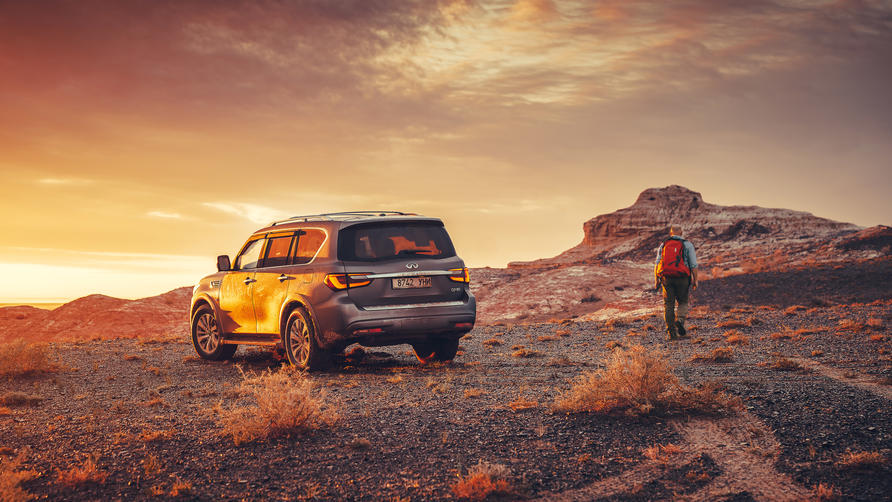
We’re on the move. Our destination is Flaming Cliffs, but there’s a stop en route. We scramble around an escarpment and there, poking fully out of the loose shale, jaw agape, is a Protoceratops skull. It’s being left where it is. In the UK, we get quite excited to discover a Civil War button. Out here they shrug at the Protoceratops: “basically a Cretaceous sheep”.
A Velociraptor, though? That’s a rarer find, both because its delicate bone structure is less likely to survive 75 million years of Earth’s processes and, as solitary carnivores, there were fewer of them in the first place. A few days ago they found one. Maybe two, actually, it’s hard to tell. So that’s where we’re headed, away from the escarpments and exposures, back across the chive plains before suddenly tumbling off the edge of a cliff and descending into… Mars. Flaming Cliffs indeed. The QX80 is our rover, clambering down this treacherous path, its mission also one that involves taking samples. In this case the transport of Velociraptor to Mongolia’s Institute of Palaeontology and Geology in Ulaanbaatar.
But first comes extraction. The rains have re-covered the bones, so there’s little to see, but we establish a perimeter by painstakingly brushing and scraping away material at the edges, slowly digging down, leaving an island of still-concealed juvenile Velociraptor bones. Plaster bandages are then swaddled around it, creating a hardened shell around the precious contents. Four hours’ work. It seems a lot of effort to go to when you think about how many more important finds there must be not only within Mongolia, but perhaps within a few feet. It’s only later I’ll appreciate the magic.
That night we toast a good day’s work and, in the spirit of dino-bonhomie, the following morning I agree to drive the QX80 while wearing an inflatable T-Rex suit. My dignity knows no bounds. Reality restores itself when I realise I have to transport an actual dinosaur. The cast is placed on top of Drew’s soft bag for extra cushioning, blankets are packed around it and off I set, gladder than I’ve ever been to have a car that sponges up the rough so well. Dino-transportation might be a niche market, but Infiniti, you’ve got it sewn up.
I last about, ooh, 50 yards before realising I’m not cut out for this responsibility. The drive back across the desert is too tempting, I just know I’ll get carried away and forget the precious cargo until I see it bouncing off the ceiling as I gaily sail off another crest. With the other QX80 acting responsibly, I’m free to lark about. It’s no rally car, the flat seats need more bolstering, and underneath it’s little more than a reskinned Nissan Patrol. But that makes this behemoth ideal for this landscape. Lantern-jawed and teak-tough, but with a hint of luxury to help while away the hours.
Of which there are many. Once we hit tarmac, Ulaanbaatar is 360 miles north on single-carriageway roads. The scenery is a constant spool of green plain. One town, one village, if memory serves, were the only interruptions. No fences, no fields, some hills as we neared UB. And I’m not aware of seeing a single tree.
Mongolia’s Centre of Palaeontology contains treasures. Suddenly I get it, I get Badmaa’s celebration when he found the Ankylosaurus herd, his anticipation where I only saw the faint outline of a couple of Velociraptor ribs. Because he saw the potential. I see it now, having safely delivered the cast to its new home to dry for a couple of months before exploration, as I cast my eye around the lab, see not only the painstaking physical uncovering of the fossils, but understand what they tell us. They are puzzles, and palaeontologists solve them.
In the basement, we’re shown the fossilised remains of a Velociraptor apparently incubating a clutch of eggs, the very fossil at the centre of the idea that the dinosaurs might actually have been warm-blooded. Will our cast provide further evidence? If not, another one, teased gently from Mongolia’s Cretaceous substrate at some point in the future, surely will. And now, Badmaa will have a better idea of where to look.
Trending this week
- Car Review
BMW 1 Series
- Top Gear's Top 9
Nine dreadful bits of 'homeware' made by carmakers





